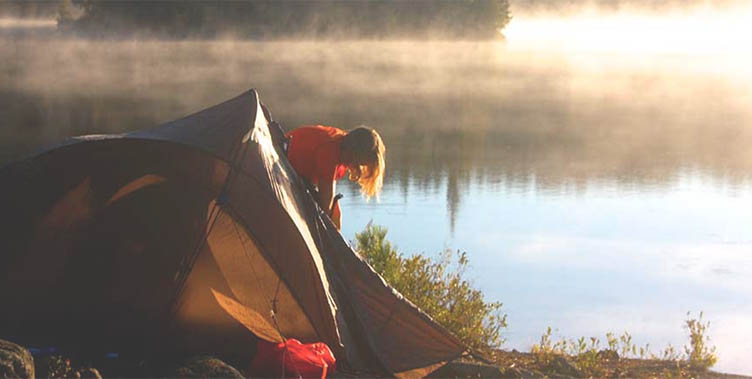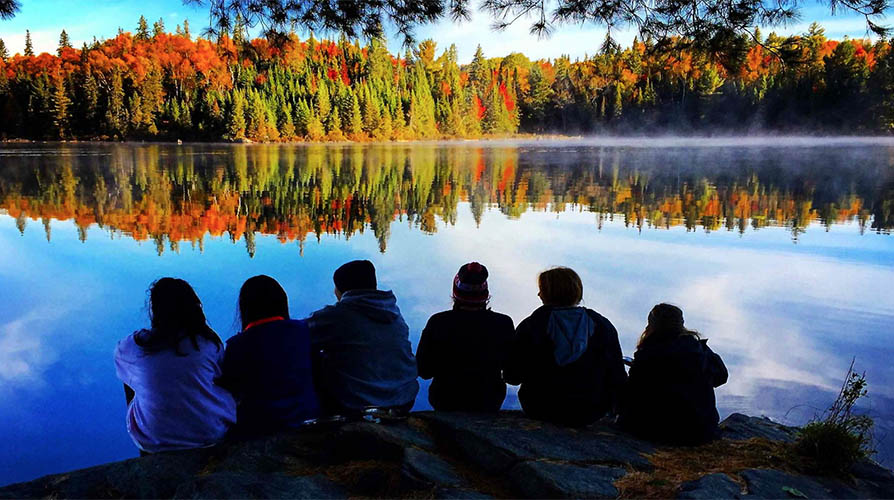By Thomas J. Ryan
<span style="color: #a1a1a1;">Japanese researchers have found COVID-19 infection indoors is almost 19 times higher than outdoors.
The study, commissioned by Japan’s Minister of the Ministry of Health, Labor and Welfare of Japan and conducted by researchers at Hokkaido University and Tohoku University concluded, “It is plausible that closed environments contribute to the secondary transmission of COVID-19 and promote superspreading events. Our findings are also consistent with the declining incidence of COVID-19 cases in China, as gathering in closed environments was prohibited in the wake of the rapid spread of the disease.”
The findings add to a number of recent studies touting the health and safety benefits of being out-of-doors as well as challenges staying active during the lockdown.
›Leave No Trace Study Finding Long-Term Changes In Outdoor Recreation Behavior
The Leave No Trace Center For Outdoor Ethics and its academic partner, Penn State University, worked together to conduct a study that can offer guidance to land managers, recreation providers and outdoor enthusiasts across the U.S. Through three phases of survey-based data collection, a longitudinal perspective of how outdoor recreationists are reacting to COVID-19 was developed. The three-phase surveys were conducted beginning April 9 and ending May 23. Among the findings:
- Recreationalists are increasingly more aware of long-term changes to their behavior. In Phase 1 of the study, 38 percent of respondents perceived that their long-term recreation behavior would change in response to their experience during the pandemic. By Phases 2 [49 percent] and 3 [52 percent], half of the respondents perceived long-term changes. The most noted long-term changes were utilizing local public lands more often and increasing their array of recreational activities.
- Recreationalists are beginning to get back to their normal dose of nature. Before the pandemic, respondents reported they participated in some kind of outdoor recreation, about five days per week on average. In Phase 1, that number had declined significantly; however, participation rebounded significantly in Phases 2 and 3.
- Recreationalists are beginning to travel away from their home turf. Before the pandemic, only 11 percent of respondents typically stayed within two miles from their homes to participate in outdoor activities. In Phase 1, immediately following the declaration of the pandemic, 50 percent of respondents were typically staying within two miles from home to recreate. As the pandemic progressed and shelter-in-place orders decrease, respondents traveled further once again with 42 percent of Phase 2 of respondents indicating they stayed within two miles of home to recreate with the percentage sliding to 31 percent for Phase 3 respondents.
- Recreationalists are venturing back into the backcountry. Before the pandemic, respondents reported they traveled 4.8 miles into the backcountry during their average outdoor recreation activities. In Phase 1, backcountry travel declined significantly; however, backcountry travel increased significantly by Phase 3. Still, backcountry travel has yet to recover to pre-pandemic levels.
- Recreationalists base their behavior on personal health and clear communication from trusted sources. Across all three phases of the study, respondents indicated their desire to gain health benefits and comply with orders and recommendations from authorities were most important when making outdoor recreation decisions.

›Entirely New Consumer Group Discovers Outdoor Experiences During Pandemic
According to a nationwide survey conducted in early May by CGPR, a communications and PR firm, over 82 percent of respondents said they would continue to stay engaged in outdoor activities after restrictions are lifted paving the way for increased participation and an optimistic future for the outdoor industry.
Survey respondents were divided into those new to outdoor experience and respondents who regularly participated in outdoor activities. For novices, the top reason for going outdoors was exercise, followed by getting sunshine and fresh air and, lastly, walking the dog. When asked what were the key factors for why they hadn’t gone outdoors pre-COVID-19, 59 percent said lack of time, 29 percent said lack of knowledge about the outdoors, 18 percent said the price of gear and/or apparel, and 12 percent said lack of access.
When respondents were asked if COVID-19 impacted how they enjoyed the outdoors, over 60 percent said it had changed how they engaged in outdoor activities. Over 70 percent of this group of devoted outdoor enthusiasts said post-COVID-19 they would be more careful, clean equipment and practice social distancing.
“The silver lining is that new people discovered the peace and sense of balance that outdoor activities may bring, During the past few weeks, we saw unprecedented numbers of people enjoying a wide variety of past times including activities such as taking walks, flying kites, riding scooters, going on bike rides, walking their dogs or running on the beach. Getting outdoors, as we have seen, is as simple as walking out your back door. The fresh air and sunshine that has lifted us all will continue to do so. This gives us optimism for the future,” ” said Chris Goddard, founder CGPR.
›Study Shows Dramatic Impact Of COVID-19 On Active Canadians
Early findings from a Brock University study found that a significant reduction in outdoor activity due to COVID-19 may have a harmful effect on mental health.
Researchers collaborated with ALIVE Outdoors, an outdoor and experiential education company, to collect data from 1,550 participants across an eight-day span beginning in early May. The major callout from the results are respondents reporting significantly worse mental health due to the lack of opportunity to take part in outdoor recreation activities.
“The magnitude of the impact was surprising,” said Professor of Recreation and Leisure Studies Tim O’Connell, in a press release. “We think it is a reflection of Canadians relying on outdoor recreation for healthy living and as a way to connect socially with others. We found that participants reported a significant change in mental health due to the lack of ability to get outdoors.”
The study reveals outdoor enthusiasts reduced their activities by six hours per week on average but did not completely give up being outdoors despite park closures. Instead, they pivoted from outdoor activities such as camping, mountaineering or playing outdoor sports in favor of gardening, walking and nature photography.
“Many of these more complex outdoor recreation experiences like canoeing, hiking and sea kayaking are pre-planned many months in advance,” said Howard. “What may have happened during COVID-19 is that many people had to go down their list of other outdoor recreation activities that they enjoy. We saw increases toward walking in the neighborhood and bird watching.”
Participants going forward planned to change their behavior and travel to different places with different people and modify their activities. They also said they would return to their regular activities once the pandemic ended and would continue to honor the closure of recreational areas. Respondents also indicated that advocating for the protection of outdoor recreation resources was important to them in the future.
“Finding creative ways to maintain access while adhering to physical distancing requirements needs more attention from policymakers and a higher priority on public health agendas,” said Howard. “Rather than restrict, we should support these individuals to maintain their physical and mental health in times when this is incredibly important.”

›Survey Shows COVID-19 Lockdown’s Impact On Children, Youth Activity
A nationwide survey of Canadians commissioned by ParticipACTION, a national non-profit organization whose mission is to help Canadians sit less and move more, showed COVID-19 restrictions linked with adverse behaviors.
The study comes as restricted access to playgrounds, schools, childcare, playdates, and instructions to “stay home” have made it more challenging than ever for kids to develop, and maintain, healthy movement behavior habits. In April, one month after the World Health Organization declared COVID-19 a global pandemic, less than three percent of Canadians ages 5-to-17 met the minimum recommendation in the Canadian 24-Hour Movement Guidelines for physical activity, sedentary behavior and sleep in contrast to 15 percent before the pandemic.
Over 1,500 Canadian parents responded to the survey that assessed COVID-19-related changes in movement and play behaviors. Outdoor Play Canada and several universities from across Canada contributed to the study.
The first of several scholarly papers expected from the research showed that grades for physical activity, screen time, and 24-hour movement behaviors would all be “F” during the COVID-19 lockdown. During the restrictions, 18 percent met the physical activity guideline, 11 percent met the screen time guideline and 71 percent met the sleep guideline with only 2.6 percent meeting the overall guidelines.
“This survey showed that children and youth had lower physical activity levels, less outdoor time, higher leisure screen time and more sleep during the outbreak,” said Dr. Mark Tremblay, Chair of Outdoor Play Canada, Chief Scientific Officer for the ParticipACTION Report Card, and Senior Scientist at the CHEO Research Institute in Ottawa. “The rapid deterioration in healthy lifestyle behaviors from already low levels reminds us of the delicate balance required between efforts to prevent disease transmission and those to promote healthy behaviors. Summer homework for many children and families should be to recalibrate healthy lifestyles.”
The study found that parent encouragement and support and family dog ownership were positively associated with healthy movement behaviors.
Dr. Sarah Moore, assistant professor at Dalhousie University and lead author of the paper, added, “This pandemic has been extremely difficult for families but is also a time for families to reconnect through play, physical activity and the outdoors – so take some time together this summer to get outside and be active – it may help to mitigate the negative effects of this crisis for you and your children”, added Moore.
›Older Adults And Women More Active During Quarantine
Research from the U.K. published on July 8 in the journal BMJ Open Sport and Exercise Medicine indicates that older adults and women are outperforming younger adults and men during the pandemic when it comes to physical activity. The study, led by Anglia Ruskin University (ARU) and Ulster University, includes data from 911 UK adults who took part in an online survey which began on March 17.
The research found that 75 percent of UK adults met the World Health Organization’s (WHO) physical activity recommendations of 150 minutes of moderate physical activity or 75 minutes of vigorous physical activity per week, since the introduction of social distancing regulations. This is higher than previous studies carried out before the pandemic began and which found that between 58 percent and 66 percent of the UK adult population typically met physical activity guidelines.
Women, older adults and those with a higher annual household income were found to be significantly more likely to meet the WHO’s physical activity guidelines. This is the opposite of studies carried out prior to the pandemic where men and younger adults were found to have higher levels of physical activity.
Lead author Dr. Lee Smith, Reader in Physical Activity and Public Health at Anglia Ruskin University (ARU), said: “The overall levels of physical activity are higher than we were expecting. It may be that the UK public has experienced an increase in free time and used this time to be physically active. Additionally, during the early stages of the outbreak, one of the few reasons to leave home was to take part in an hour of exercise. As well as offering a reason to go outside, this may have served as a target for some people. Typically, the proportion of UK adults meeting physical activity guidelines declines with age. Therefore, there should be additional support offered to older adults to encourage them to sustain this level of physical activity post-pandemic.”
Photos courtesy Alive Outdoors
















